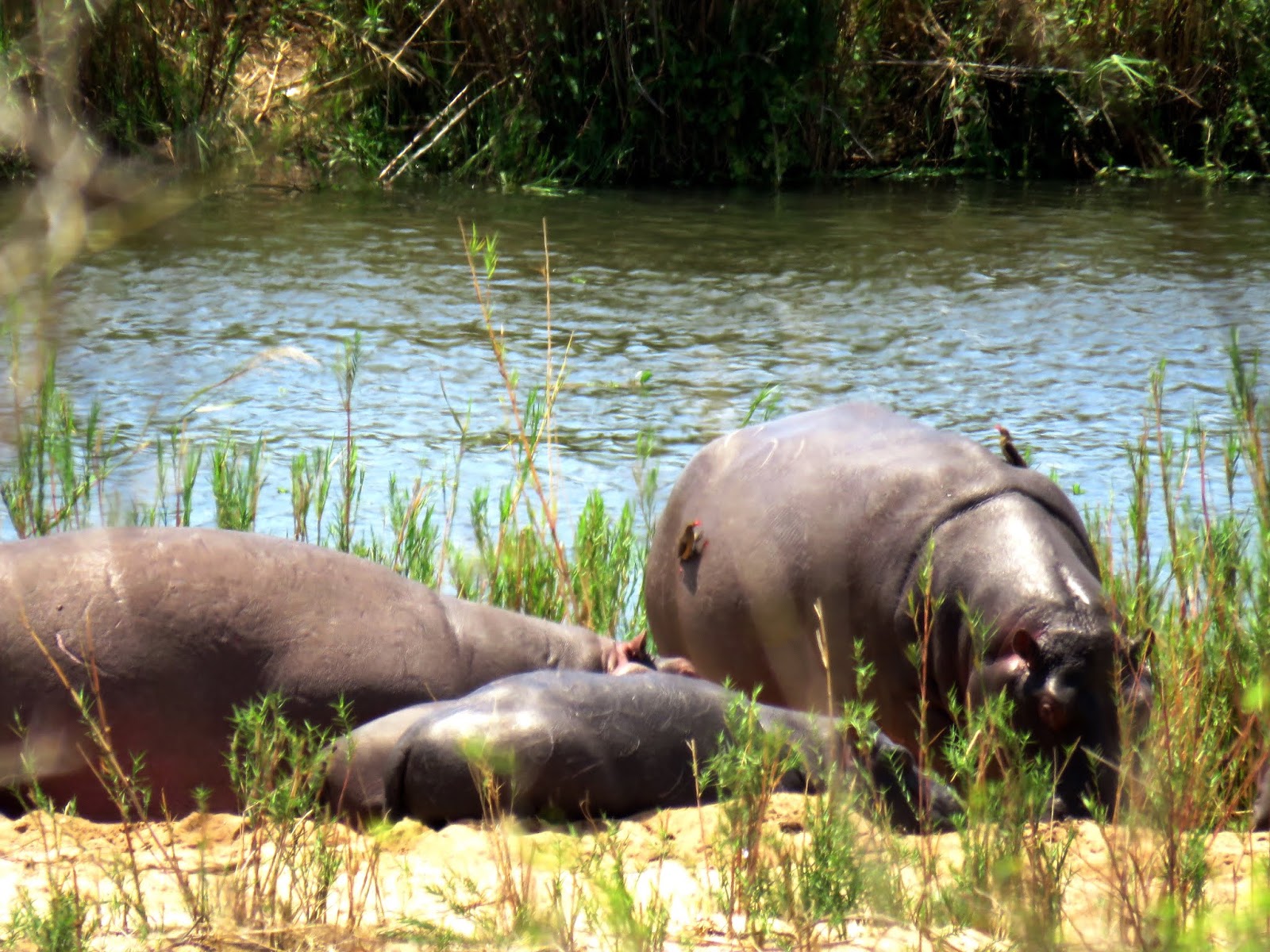 |
| Wildebeest Willie often takes a rest in the shade in the garden. |
“Sighting of the Day in the Bush”
 |
| Pregnant zebra and friends stopped by for pellets and veg. |
It’s early Saturday afternoon on another perfect weather day. Tom’s sitting near me at the big table on the veranda is listening to a podcast of his favorite radio show from Minnesota, Garage Logic.
 |
| Our favorite wildebeest, “Wildebeest Willie,” will often visit for several hours. He loves being talked to and won’t even touch the pellets I toss until I stop talking to him while making eye contact. |
He doesn’t need to use an earpiece to listen since I don’t mind the background noise. He keeps it soft (considering sound restrictions in Marloth Park), which he can hear with his less-than-ideal hearing, damaged after years on the railroad, by placing his laptop on his lap.
He spent his entire life in Minnesota, up until we started to travel the world in 2012, and is still connected to news and information from his original home state.
 |
| Wildebeest Willie got along well with this young male kudu as they shared pellets. Willie doesn’t care for apples and carrots, only pellets. |
In addition, he’s still an avid Minnesota Vikings (football) fan and watches each game, streaming from the NFL GamePass website, for which he pays an annual fee. I watch some of the games, but usually, I’m busy preparing the daily post when he’s watching it.
With the time difference, if a game is played on Sunday, he may watch it late at night or the following morning. If he watches it the following day, the commercials are removed, which he prefers.
 |
| He looks into my eyes when I talk to him in a goofy high pitched voice. In this photo, he was sharing pellets with impalas. |
Having spent a little over 40 years in Minnesota, I don’t feel so connected to the state, only to the family and friends who live there. I grew up mostly in California, but other than the fact I still have family there, I feel no connection to that state either.
Speaking of California, we send our love and prayers to those dealing with the horrifying wildfires, including the sorrowful loss of lives and many homes and businesses.
 |
| Monitor lizard in the garden. |
My sister Julie lives in Los Angeles, and if the fire isn’t contained soon, she may have to evacuate. We’re staying in close touch. The world is not a safe place. There are endless natural and human-responsible disasters that impact millions of lives, and there is literally nowhere in the world that is entirely safe and free of risk.
Right now, Marloth Park has a tremendous risk of fire. After all, this is the bush, and although it has rained a few times, the bush is dangerously dry. One careless action and this entire conservancy could be gone in a flash, including animals and humans alike.
 |
| “Monitor lizards are, as a rule, almost entirely carnivorous, consuming prey as varied as insects, crustaceans, arachnids, myriapods, mollusks, fish, amphibians, reptiles, birds, and mammals. Most species feed on invertebrates as juveniles and shift to feeding on vertebrates as adults. Deer make up about 50% of the diet of adults of the largest species, Varanus komodoensis. In contrast, primarily fruit eaters are three arboreal species from the Philippines, Varanus bitatawa, Varanus making, and Varanus olivaceus. Although normally solitary, groups as large as 25 individual monitor lizards are common in ecosystems that have limited water resources.” |
We take our car keys to the bedroom to keep on the nightstand next to the bed. At night If there’s a fire during the night, we have already planned our escape through the bedroom window and will be in the little car in seconds, ready to escape.
Oddly, this house only has one entrance and exit, the front door. There is no backdoor or side door from which to escape. Building restrictions aren’t as tight in Africa as in other parts of the world that would never approve a building plan without multiple exits.
 |
| Elephant at the Crocodile River. |
We kept this in mind when we decided on our fast escape route if necessary. Tom, a former volunteer fireman, makes me feel extra safe. Who but a fireman would be the best person to help in an emergency? My multi-faceted husband is an asset to me in many ways!
We’ve already been out on our daily drive in Marloth Park and saw very few animals. After all, it’s the weekend, and there are many cars and tourists in the park, causing the wildlife to stay well hidden. We did encounter a few giraffes, kudus, impalas, and ostriches. We saw very little at the Crocodile River.
 |
| Elephant taking a big drink at Sunset Dam in Kruger National Park. |
So far today, we’ve only seen one unknown female warthog, two hornbills, and various other birds. This is highly unusual. By Monday, we’ll be excited to see them return, gracing our garden with lively activity.
Tonight, back to Jabula Lodge and Restaurant for another fun evening with Rita and Gerhard with great food, wine, and lively banter with Dawn, Leon, Lyn, and other guests.
May your day and evening be filled with lively banter and good food!
Photo from one year ago today, November 10, 2017:
 |
| Tom’s photo from the veranda in Costa Rica of this Flame-colored Tanager. For more photos, please click here. |


























































































































